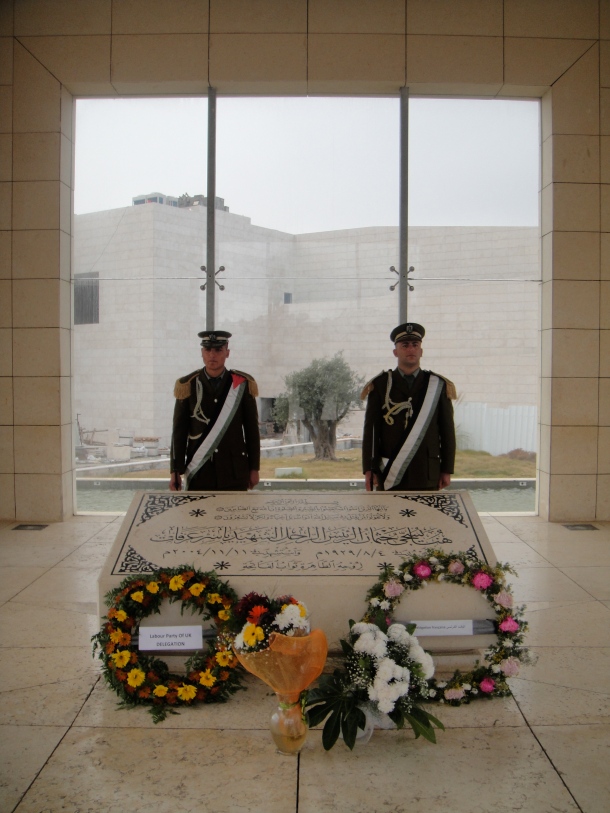One site in the West Bank I was keen on visiting was Palestinian leader Yasser Arafat’s grave in Ramallah. My interest stemmed from the fact that Arafat is buried on the grounds of his former headquarters and visiting his grave would be an excuse to be allowed in to see the compound.
During the period of the Second Intifada in the early 2000s, Israeli forces laid siege to Arafat’s compound and kept him under virtual house arrest for years. I distinctly remember seeing video footage from that time of Israeli tanks and armored bulldozers battering the compound and I was interested in seeing where all of this had taken place in person.
As I was to discover though, no evidence is left of this period as Fatah has made this site their headquarters and have rebuilt the entire complex… Nevertheless, it is still an interesting place to visit:
Arafat was not permitted to depart his Ramallah compound until October of 2004 when it was apparent that he was near death and was flown to Paris. Despite the best efforts of the doctors in Paris, Arafat died on November 11, 2004 for reasons that are still not clear (leading to a variety of sinister rumors).
Burial in Ramallah was not actually Yasser Arafat’s first choice. However, Israeli Prime Minister Ariel Sharon refused his request to be buried in Jerusalem. Never ones to give up easily, the Palestinians settled for burying Arafat in Ramallah but used soil from the Al-Aqsa Mosque in Jerusalem.
The grounds of the former Arafat compound:
The building in this picture is the mausoleum housing Arafat’s remains… The man standing in the doorway is the commander of the site and for some reason he was extremely sketched out by me. He hovered behind me for the duration of our visit, never taking his eyes off of me for a second and carefully monitoring what I was photographing:
Inside the mausoleum… Obviously, that is Yasser Arafat’s grave in the foreground:
An outside view of Fatah’s headquarters:
None of the structures from the period I was interested in remain as Israel destroyed all of the buildings inside the complex except for the office building Arafat was sheltering inside. And although Yasser Arafat’s office building was left standing, the top and ground floor of the three-story building were well worked over by machine-gun fire and shells.
Israeli forces knew the compound well, for it was their own headquarters in Ramallah from the 1967 war until 1994. They also used it as a prison for holding Palestinians.
During the British mandate rule of Palestine, the buildings served as a military headquarters, a court of law and a prison, capable of holding around 400 prisoners.
When the British left in May 1948, Jordan took over, using the compound again as a prison and as a residence for Jordanian army officers and their families.





what a history that compound has
Pingback: Ramallah | The Velvet Rocket